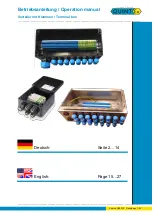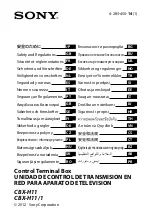
Chapter 26
PID Instruction
26–10
•
Output limiting enabled bit OL (word 0, bit 3) – This bit is set when
you have selected to limit the control variable. This bit can be set or
cleared by instructions in your ladder program.
•
Scale setpoint flag SC (word 0, bit 5) – This bit is cleared when setpoint
scaling values have been specified.
•
Loop update time too fast TF (word 0, bit 6) – This bit is set by the PID
algorithm if the loop update time you have specified cannot be achieved
by the given program (because of scan time limitations).
If this bit is set, try to correct the problem by updating your PID loop at a
slower rate or move the PID instruction to an STI interrupt routine. Reset
and rate gains will be in error if the instruction operates with this bit set.
•
deadband range DB (word 0, bit 8) – This bit is set when the process
variable or error is within the deadband range.
•
Output alarm, upper limit UL (word 0, bit 9) – This bit is set when the
calculated control output CV exceeds the upper CV limit.
•
Output alarm, lower limit LL (word 0, bit 10) – This bit is set when the
calculated control output CV is less than the lower CV limit.
•
Setpoint out of range SP (word 0, bit 11) – This bit is set when the
setpoint exceeds the maximum scaled value or is less than the minimum
scaled value.
•
Process var out of range PV (word 0, bit 12) – This bit is set when the
unscaled (or raw) process variable exceeds 16383 or is less than zero.
•
PID done DN (word 0, bit 13) – This bit is set on scans where the PID
algorithm is computed. (It is computed at the loop update rate.)
•
PID enabled EN (word 0, bit 15) – This bit is set while the rung of the
PID instruction is enabled.
















































